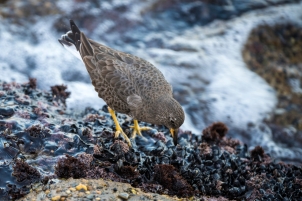
As a kid in the 1940s, Sam Farr used to frequent the tide pools on Carmel Beach, exploring and playing with the multitude of colorful creatures that lived there. But when he returned as an adult with his young daughter in tow, the tide pools weren’t quite how he remembered them.
“Not a single animal was there,” he recalls. “Not a sea urchin, not a sea anemone, not a hermit crab.”
The experience added to Farr’s already deep-seated belief that ocean health is crucial to the well-being of our planet and ourselves. First as a California State Assemblyman from 1980-1993, and then as a U.S. Congressman from 1993 to the present, he acted on that belief by creating state and federal legislation to protect our ocean and coast, and to support ocean research along Monterey Bay.
Now, after more than 40 years of public service, Farr is returning from Washington, D.C. to his home in Carmel, California to, in his words, “become a full-time grandfather” to his daughter Jessica’s children, Ella and Zachary.
On Dec. 1, 2016, Monterey Bay Aquarium honored Sam Farr’s lifelong contributions to ocean conservation at a reception for community leaders and philanthropists.
Continue reading Honoring Congressman Sam Farr’s ocean legacy









